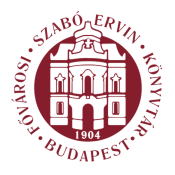Prakfalvi Endre: Roman Catholic Churches in Unified Budapest - Our Budapest (Budapest, 2003)
The Parish Church of St. Margaret of the House of Árpád, 1933
mentor of the Roman school and the foremost inter-war historian of medieval art in Hungary, had the following to say about the church. "With its cubic masses, it radiates with the spirit of our Lombardy-inspired Árpád period architecture... The pure basilican layout of the interior... and the simplicity of the clearly visible main altar follow the classical rules of old Christian architecture, which regulated the construction of our very first churches built in the nth century, while employing the most advanced technologies of the day” {Magyar Építőművészet, Hungarian Architecture, 1941). The third element of the architectonic complex is a 60-metre tall campanile. The pinnacle supporting the cross exposes the structure of the tower-body. The static engineer of both the church and the tower was Róbert Folly. The work of Aladár Árkay, described as "the pride of our existence as a nation” in his obituary, was equally appreciated by all, regardless of party affiliation or ideological preferences in the troubled intellectual life of Hungary in the inter-war period. The church sustained serious damage during an air raid on the night of 5 September 1942. Thanks to its sturdy structure, the building survived the ordeal, but the three stained-glass windows made by Lili Sztehló (which made the church into what the eminent church historian János Jajczay described as "the Saint Chapelle of Buda”) perished. Their reconstruction according to the original drawings is still underway. The Parish Church of St. Margaret of the House of Árpád,1933 Lehel tér, District XIII "This hoty virgin would oftentimes ponder the sacred lives of her kin [István, Imre, László, Erzsébet]... and would sometimes talk thereupon." (The Life of the Blessed Margaret, recorded by Lea Ráskai, c 1510) Brought up in a cloister (as a would-be nun) as a votive offering made by her parents to thank God for the liberation of Hungary from the Mongol invasion, the daughter of Béla IV and Princess Mária Laszkárisz was canonized in 1943, 701 years after her birth. Her legend was written by her confessor, its translation coming down to us in a handwritten copy made by Lea Ráskai Professor of medieval architecture, István Möller (1860-1934) began to work on designs for a "votive church of Hungarian revisionism" in 1928, hardly ten years after the loss of Hungarian territories under the peace treaty of Trianon. 53
